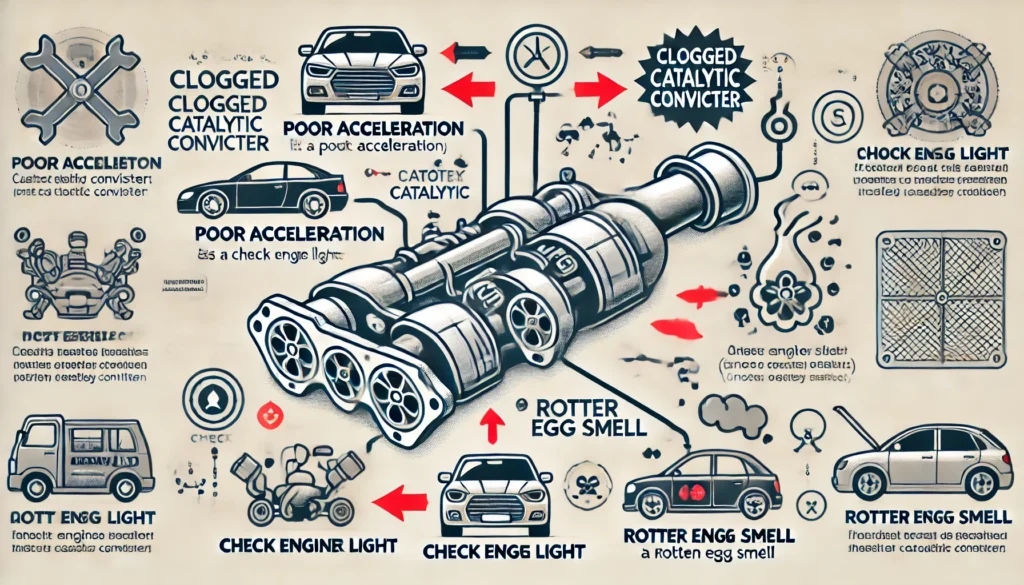A clogged catalytic converter can lead to a host of problems, ranging from reduced engine performance to costly repairs. Recognizing the symptoms early can help you address the issue before it causes significant damage to your vehicle. In this article, we’ll explore how to tell if your catalytic converter is clogged and what you can do to diagnose and fix the problem.

Signs of a Clogged Catalytic Converter
1. Poor Acceleration
One of the most noticeable symptoms of a clogged catalytic converter is poor acceleration. If you find that your car struggles to accelerate, especially when going uphill or merging onto highways, it could be due to a blockage in the catalytic converter. The clog restricts the exhaust flow, causing the engine to work harder and resulting in sluggish performance.
2. Check Engine Light
A clogged catalytic converter often triggers the check engine light on your dashboard. While this light can indicate various issues, a clogged converter is a common culprit. Using an OBD-II scanner to read the error codes can help determine if the catalytic converter is at fault.
3. Reduced Fuel Efficiency
A decrease in fuel efficiency is another sign that your catalytic converter may be clogged. When the converter is blocked, the engine needs to burn more fuel to produce the same amount of power, leading to higher fuel consumption. If you notice a sudden drop in your miles per gallon, it’s worth checking the catalytic converter.
4. Sulfur or Rotten Egg Smell
A clogged catalytic converter can cause a buildup of exhaust gases, leading to a strong sulfur or rotten egg smell. This odor is a clear indication that something is wrong with your exhaust system, and the catalytic converter is often the source.
5. Rattling Noise
If the internal components of the catalytic converter are damaged or loose, you may hear a rattling noise coming from under your vehicle. This noise is typically more noticeable when the engine is idling or during startup. A rattling catalytic converter is a sign that it’s not functioning properly and may be clogged.
Diagnosing a Clogged Catalytic Converter
1. OBD-II Scanner Test
Using an OBD-II scanner, you can check for error codes related to the catalytic converter. Common codes like P0420 or P0430 can indicate a problem with the converter, often related to a clog.
2. Backpressure Test
A backpressure test can determine if there is excessive pressure in the exhaust system, which is a sign of a clogged catalytic converter. This test requires specialized equipment and is usually performed by a professional mechanic.
3. Temperature Test
Another method to diagnose a clogged catalytic converter is by using an infrared thermometer to measure the temperature before and after the converter. If the outlet temperature is significantly lower than the inlet temperature, it could indicate a clog.
What to Do If Your Catalytic Converter Is Clogged
If you suspect that your catalytic converter is clogged, it’s essential to address the issue promptly. In some cases, using a catalytic converter cleaner may help remove minor blockages. However, if the clog is severe, the converter may need to be replaced. Consult with a professional mechanic to determine the best course of action.
Conclusion
A clogged catalytic converter can severely impact your vehicle’s performance and efficiency. By recognizing the symptoms early and taking the necessary steps to diagnose and fix the issue, you can prevent more extensive damage and ensure that your vehicle runs smoothly.
